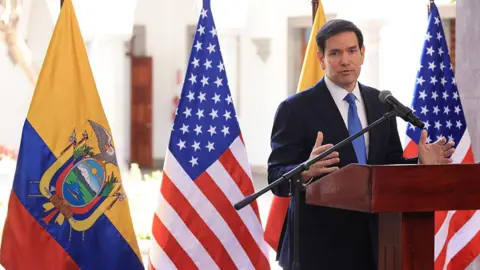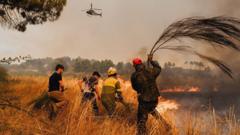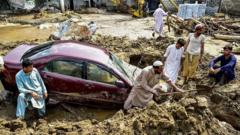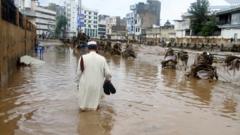Peñico, an ancient city believed to date back 3,500 years, has been recently discovered in the Barranca province of northern Peru, expanding knowledge about early civilizations in the region. This significant site, located approximately 200 kilometers north of Lima at an elevation of about 600 meters (1,970 feet), is thought to have been established between 1,800 and 1,500 BC, coinciding with the flourishing of notable ancient civilizations across various global regions, including Egypt and Mesopotamia.
Recent archaeological studies reveal that Peñico functioned as a vital trading hub, connecting early communities along the Pacific coast with those from the Andes mountains and the Amazon basin. This relationship is important for understanding the transition and evolution of social structures after the decline of Caral, the Americas’ oldest known civilization, which thrived over 5,000 years ago.
Drone footage captured amid the excavation highlights a key circular structure positioned at the city's center, surrounded by numerous stone and mud edifices. Over eight years, researchers have identified eighteen structures, inclusive of temples designed for ceremonial purposes and residential complexes, alongside various ceremonial artifacts like clay sculptures, necklaces made of seashells, and intricate beadwork.
Leading the research, Dr. Ruth Shady, who previously excavated Caral in the 1990s, emphasized the importance of this discovery for grasping the fate of the Caral civilization, especially in the wake of its downfall attributed to adverse climate shifts. Dr. Shady noted the strategic position of Peñico as it maintained trade interactions between diverse societies, encompassing coastal, highland, and jungle regions.
Highlighting the ongoing archaeological significance, Marco Machacuay, affiliated with the Ministry of Culture, asserted that Peñico should be seen as a natural continuation of the Caral societal framework. Peru continues to be a focal point for some of the most remarkable archaeological findings in the Americas, known for its prominent landmarks like Machu Picchu and the enigmatic Nazca Lines.
Recent archaeological studies reveal that Peñico functioned as a vital trading hub, connecting early communities along the Pacific coast with those from the Andes mountains and the Amazon basin. This relationship is important for understanding the transition and evolution of social structures after the decline of Caral, the Americas’ oldest known civilization, which thrived over 5,000 years ago.
Drone footage captured amid the excavation highlights a key circular structure positioned at the city's center, surrounded by numerous stone and mud edifices. Over eight years, researchers have identified eighteen structures, inclusive of temples designed for ceremonial purposes and residential complexes, alongside various ceremonial artifacts like clay sculptures, necklaces made of seashells, and intricate beadwork.
Leading the research, Dr. Ruth Shady, who previously excavated Caral in the 1990s, emphasized the importance of this discovery for grasping the fate of the Caral civilization, especially in the wake of its downfall attributed to adverse climate shifts. Dr. Shady noted the strategic position of Peñico as it maintained trade interactions between diverse societies, encompassing coastal, highland, and jungle regions.
Highlighting the ongoing archaeological significance, Marco Machacuay, affiliated with the Ministry of Culture, asserted that Peñico should be seen as a natural continuation of the Caral societal framework. Peru continues to be a focal point for some of the most remarkable archaeological findings in the Americas, known for its prominent landmarks like Machu Picchu and the enigmatic Nazca Lines.



















